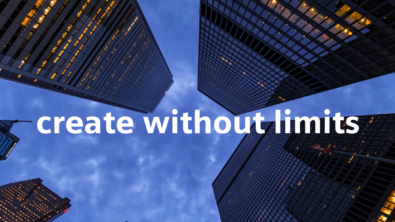Sustainability in electronics and semiconductors episode 1 transcript
Maria Mosto: Hello and welcome to a special series from Siemens Digital Industries software sustainability in electronics and semiconductor industries. I’m Maria Mosto, your host and moderator for today’s session.
I’m joined by Alan Porter, who’s the VP of our electronics industry at Siemens and Michael Munsey, who’s VP of semiconductor industry at Siemens, also Siemens digital industry software. Alan has over 25 years of experience in the electronics and semiconductors industries and Michael has nearly 30 years of experience building and executing product strategies. Thank you for joining us.
To start, why don’t you both give us a quick introduction about how you’re tackling sustainability?
Alan Porter: Well, thank you, Maria. What we’re looking at from a sustainability perspective is to be able to adapt and be flexible to all the challenges that our customers have in this area, whether it’s dealing with the overall factors of power, carbon footprint, things of that nature, or getting down into the engineering world where you have to understand the key areas in your designs for sustainability and you need to be able to measure how you’re doing in that area as you design. And you need traceability of your sustainability information and data across all your domains.
Michael Munsey: And I would add on the semiconductor side, we’re really looking at sustainability on both the manufacturing side as well as the design side of semiconductors.
Now you look at any industry that rapidly advances in terms of the complexity of semiconductor devices and building them, but also an industry that has done very little in the way that it designs its fabs for building semiconductors and most of the companies that we talked to all have net 0 carbon initiatives by the year 2030, which means some drastic changes to the manufacturing of semiconductors.
And then also you need to look at the design and really what goes into producing semiconductors that are energy efficient in and power efficient moving forward.
Especially when we look at trends with AI and the number of AI chips that are going to go into server farms and the power requirements of providing enough electricity to drive all those chips.
It’s really only two factors, the building of the semiconductors as well as the design of the semiconductors to make them more efficient.
Maria Mosto: Thanks so much for that. Before we get into more of the specifics of sustainability and these industries, can you give us the scope of how many semiconductors and electronic systems are created and disposed of each year?
Michael Munsey: From a semiconductor point of view, you’re looking at hundreds of millions of semiconductor devices produced on a yearly basis.
And then those go into a wide range of electronic devices that we’ll talk about.
But we’re also in a in an economy where we get rid of our devices as quickly as we buy them. Some people need a new cell phone every single year. Some people need a new computer every two years, which really leads into rapid turnover of these devices that we make and then throw away very quickly.
Alan Porter: Right. And what that means is you’ve got is billions of lithium batteries out there, and you’ve also had from a recyclability standpoint, a lot of times you would like to have the rare earth elements and the key components of the electronics. But the electronics aren’t saved in that way. They’re typically crushed and disposed of, and then all those elements would have to be filtered out later.
Maria Mosto: So how do we design products right to avoid the environmental impact during manufacturing? Michael, what are the design considerations for those 3 stages?
Michael Munsey: Yeah. When you’re looking at the actual manufacturing of the semiconductors, really gets down to looking at the BOM of what goes into building the semiconductor because you have the chip itself. Then you have to worry about the packaging and the packaging consists of things such as the diet itself, the substrate, the lead frame, the bonding, and all of that.
And when you look at all of those pieces, you really have to understand where each one of those parts are coming from in terms of the supply chain, where the materials are coming from, and setting up some type of guidance around these supply chains. In the past, manufacturing semiconductors were limited to certain parts of the world, mostly in Taiwan and South Korea. But now, with things like the Chips Act and reshoring of semiconductor manufacturing, you’re looking at a many more fabs being built in the US, many more fabs being built in Europe and so you really now have to understand the supply chain and where you are starting to get a lot of these chemicals and a lot of these components along the way.
Understanding what the sustainability initiatives are from the suppliers and being able to actually make intelligent decisions now in terms of where you’re acquiring all the materials that you need to be able to produce semiconductors and in a sustainable fashion moving forward by understanding the details are still supply chain and making those decisions based on what your suppliers are doing in terms of a sustainability effort that they may have.
Maria Mosto: That’s a really good point. Alan, building on what Michael just said, what are the electronics ideation design considerations and how does it relate to that?
Alan Porter: Well, it’s really an extension of what Michael described from a semiconductor standpoint. It’s from a BOM perspective, you need to be able to follow the supply chain and components through the electronic system.
So all the way up from the PCB board to the subsystem to the system, to the system of systems you have that extension of following the requirements and making sure you’re picking the right components and materials and you can trace those components and materials through the chain, and Michael mentioned that the localization, aspect you have your you’re coming from all those different areas of the world and you also have localized requirements and maybe even compliance requirements that have to be managed as well.
And then when it comes to recycling and the other end of the circular economy, how do you handle that? Both internally and from a localized perspective in different countries.
Maria Mosto: Alan, I’ve noticed that electronic systems companies have begun to pressure semiconductor companies to make more sustainable ICs and Michael, how are semi companies really responding to this pressure?
Alan Porter: Yeah, I think a larger and larger amount of carbon footprint is coming from the IC’s for various reasons. I think the 7% is the amount now and really when you factor all that in you start adding up all the different aspects of what comes from an IC into the overall design.
It’s important that you can assess that you can aggregate it and you make sure that you’re still maintaining the rules and requirements that you need to build your sustainable design.
So you’re looking at that aggregated information from a BOM perspective and there’s a lot of details that go into that from the IC side. Michael, maybe you can describe some of those areas for us.
Michael Munsey: Yes. Right off the bat, with the roughly 7% of the worldwide carbon footprint actually coming from the use of semiconductors, a lot of this is coming from data centers. Companies have to figure out how to reduce the overall power consumption of their devices, and that could be done two ways. That could be done in the design stage and that could also be done in terms of manufacturing and the decisions that are made for manufacturing.
The design stage gets the matter of having the right tools to be able to make the right decisions to be able make design decisions that actually will allow the reduction of power and being able to have an environment that gives you the feedback to show that you are actually reducing power. And that’s just not on the chip. That’s also you have to take that into account.
The system level right? It’s the software that runs on the semiconductors that also contribute to that. It’s truly a system level view that you need to look at to be able to reduce that, but there’s also things in the manufacturing side. Even today, there are things you could do in terms of advanced packaging, and there are many, many discussions around things like 3D IC and here genius integration and advanced packaging where companies are looking at instead of having a single monolithic. Like design making decisions around chiplets and using smaller dyes, all packaged together where you can optimize performance in the latest nodes.
And try to contain that to as small footprint as possible and then use legacy designs that are running older nodes that consume less power to create an overall system that uses less power. Even when you look at advanced packaging, there are things in advanced packaging such as backside power delivery, which itself could reduce the power of the overall system. Then that will even benefit large AI chips, which are still very much monolithic and consume a lot of power. By using advanced packaging techniques, we can actually look at reducing the power footprint of those devices. It’s really about looking at the systems level, understanding how all the components software, and semiconductors advanced packaging all fit together to be able to make the right decisions to really look at reducing power over time.
Maria Mosto: Right. And Alan, to Michael’s point, how are electronics companies from the systems point of view working on their end to also achieve these same sustainability goals?
Alan Porter: Really, it’s a need for a digital thread from ideation all the way through manufacturing and back in the circular economy and circular design. We’re looking at all the different aspects of the system, whether it’s the PCB board, the battery itself, the IC’s, the casing, everything that goes into that system has to be considered. And as Michael mentioned, the software driving the system and defining the system has to be considered as well.
For example, when you have a device that depends on a battery, you have battery management software that’s controlling that device and managing the amount of power consumed. And that’s a very important consideration for sustainability.
Mario Mosto: Thank you both for sharing your insights on sustainability. Unfortunately, we’re out of time today, but we will continue this enlightening conversation next time. I hope you join us for part two.


